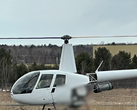India's Aircraft Accident Investigation Bureau (AAIB) has released its preliminary findings on the June 12 crash of the Air India Boeing 787 in Ahmedabad, which resulted in 260 fatalities. The report details a baffling sequence of events in the cockpit, confirming the plane's fuel supply was cut just after it became airborne.
The flight data recorder shows that at 08:08:42 UTC, three seconds after lifting off, the fuel cutoff switches for both engines moved from “Run” to “Cutoff”. The cockpit voice recorder captured one pilot asking the other, “why did he cut off?” The other pilot responded that he did not do so. At the time, the co-pilot was the one flying the aircraft.
Investigators found that the crew attempted to correct the error — 10 seconds after the cutoff, the switch for engine 1 moved back to “Run,” followed by engine 2, four seconds later. This initiated an automatic relight sequence, but the plane was already losing altitude fast. One engine was beginning to recover, but the other could not regain speed before the aircraft crashed.
The report raises questions about both human action and a potential technical vulnerability. While moving the switches requires deliberate force, the AAIB noted that in 2018 the U.S. Federal Aviation Administration issued a bulletin about a potential issue with the switch's locking feature. Air India had confirmed to investigators that it did not perform the suggested inspections because the bulletin was advisory and not mandatory.
The investigation has ruled out other causes such as weather, bird strikes, or contaminated fuel. As the probe continues, with a final report not expected until next year, families of the victims are demanding answers and accountability for the tragic loss.


















